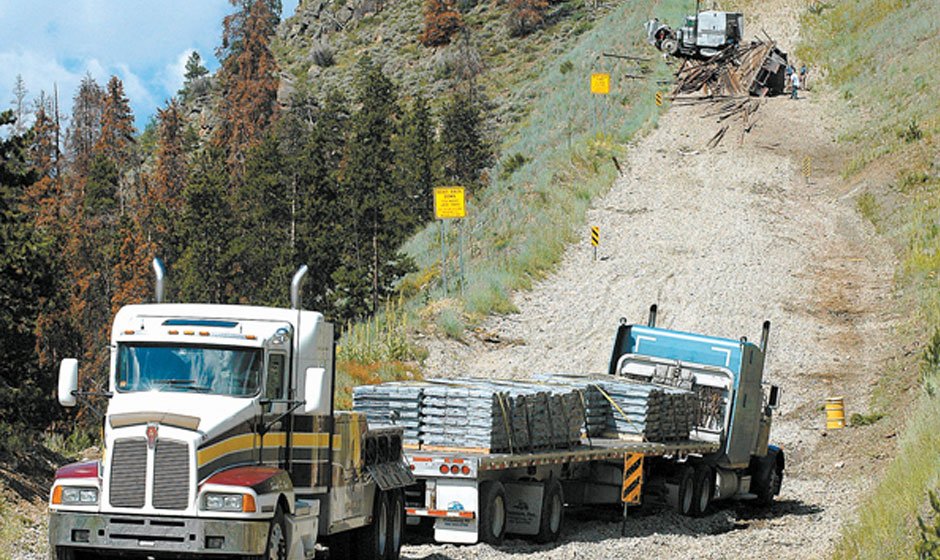Colorado’s diverse and challenging terrain poses unique risks for truck drivers navigating steep downhill stretches. Runaway truck ramps provide a critical safety measure in case of brake failure or loss of control. This article explores the frequency of runaway truck ramp usage specifically in Colorado, shedding light on the importance of these emergency escape routes. Additionally, we will touch upon the significance of mobile DOT inspections in Denver as a proactive measure to enhance road safety and compliance.
Understanding Runaway Truck Ramps
Runaway truck ramps are designed as emergency escape routes on steep downhill sections of roads. These ramps consist of specially constructed gravel beds or soft materials that safely decelerate and stop runaway vehicles, thereby preventing catastrophic accidents. By offering a controlled stopping point, they protect both drivers and other road users from potential collisions.
UItilizing runaway truck ramps in the event of brake failure can save many lives. In 2019, a Texas trucker passing through Colorado failed to use the runaway truck ramp, resulting in a 28-car pile-up that killed 8 and injured 12. The driver was charged with vehicular manslaughter as he had decided to swerve away from the runaway truck ramp. Though his truck was in good mechanical shape and passed inspections, he failed to utilize good driving practices, good decision-making, and appropriate emergency safety protocols.
The Significance of DOT Inspections in Denver
Department of Transportation (DOT) inspections have become instrumental in ensuring the safety and compliance of commercial vehicles in Denver and beyond. These inspections are typically mobile and take place at the location of the vehicle, minimizing downtime for truck operators and streamlining the inspection process. Trained inspectors perform thorough evaluations of critical components, including brakes, tires, lighting systems, and overall vehicle condition, to ensure compliance with DOT regulations. By proactively addressing any potential issues, mobile DOT inspections play a vital role in preventing brake failures and other safety hazards that might necessitate the use of runaway truck ramps.
Frequency of Runaway Truck Ramp Usage in Colorado
Determining the precise frequency of runaway truck ramp usage in Colorado involves considering various factors, including road conditions, driver behavior, vehicle maintenance practices, and safety regulations.
1. Road Conditions:
Colorado’s mountainous terrain presents numerous challenging roads where steep downhill stretches may require the use of runaway truck ramps. Factors such as road gradients, curves, and the presence of sufficient warning signs can influence the frequency of ramp usage. Well-maintained roads and effective signage can help minimize the need for drivers to rely on these emergency escape routes.
2. Driver Behavior and Training:
Driver behavior plays a significant role in preventing situations where runaway truck ramps become necessary. Proper driver training programs emphasize safe driving practices, including effective braking techniques, vehicle control on downhill stretches, and adherence to speed limits. Well-trained drivers are more likely to anticipate and address potential issues, reducing the likelihood of brake failures or loss of control situations.
3. Vehicle Maintenance Practices:
Regular vehicle maintenance is crucial in preventing accidents and reducing the reliance on runaway truck ramps. Truck operators must adhere to maintenance schedules and conduct routine inspections to ensure the proper functioning of critical components, including brakes and tires. Mobile DOT inspections in Denver provide a convenient solution for truck operators, allowing them to address maintenance issues promptly and minimize the risk of brake failures.
4. Safety Regulations and Technological Advancements:
Stringent safety regulations and advancements in trucking technology have contributed to reducing the occurrence of brake failures and control loss scenarios. The implementation of safety standards, such as mandatory brake inspections and the use of advanced braking systems like anti-lock braking systems (ABS), helps prevent accidents and decreases the reliance on runaway truck ramps.
Conclusion
Runaway truck ramps in Colorado serve as crucial safety measures on steep downhill stretches, providing emergency escape routes for trucks experiencing brake failure or loss of control. While it is challenging to determine the exact frequency of their usage, factors such as road conditions, driver behavior, vehicle maintenance practices, and safety regulations all contribute to their utilization. Additionally, routine DOT inspections play a vital role in ensuring compliance and enhancing road safety by proactively addressing maintenance issues and reducing the likelihood of brake failures. Together, these measures work towards creating a safer road for truckers, commuters, and everyone in between.

